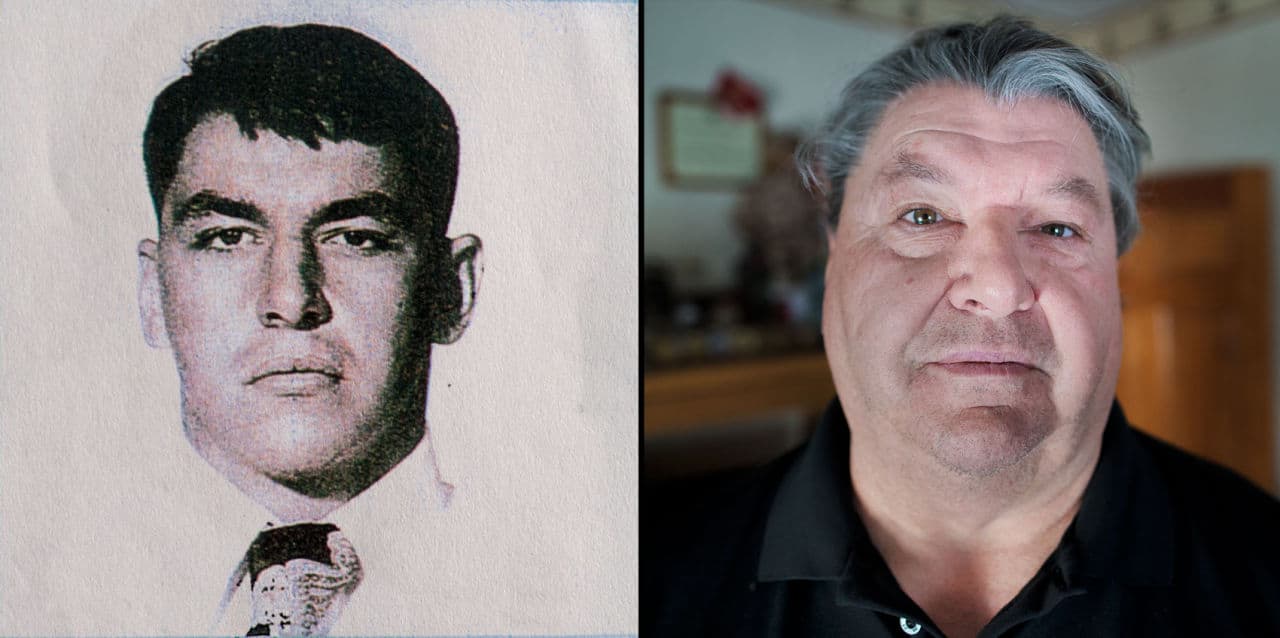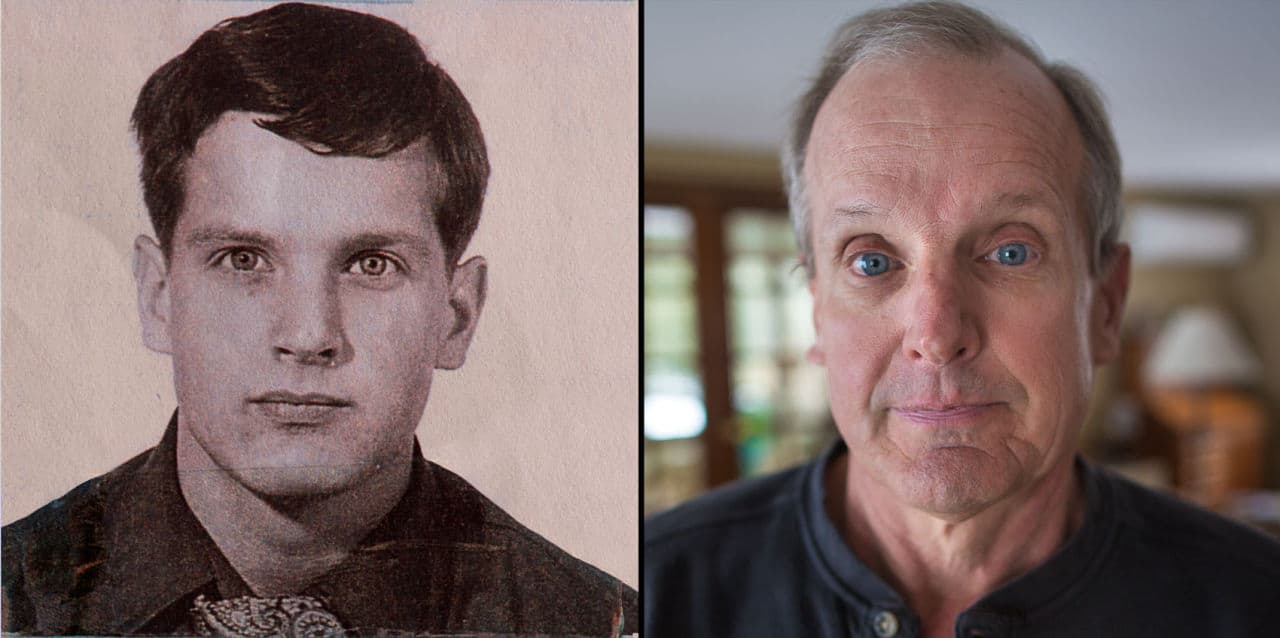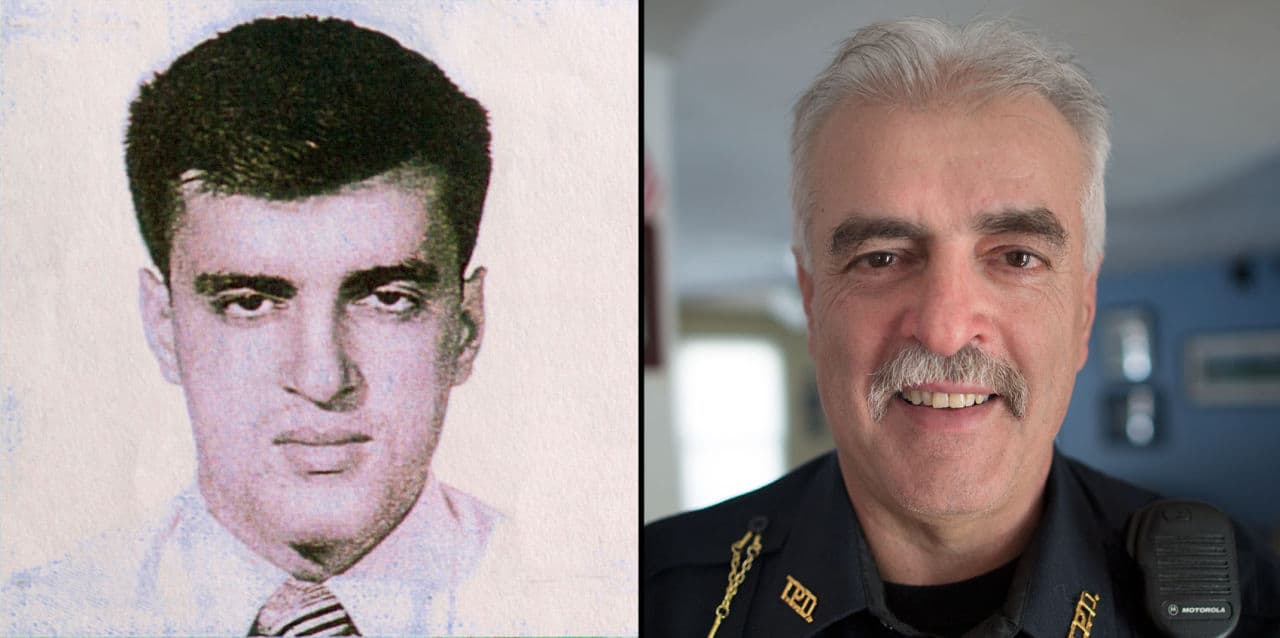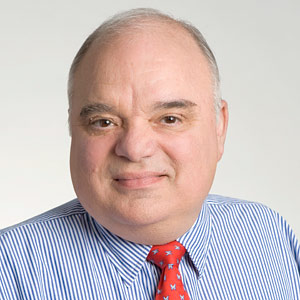Advertisement
Biographies: The Mass. Marines Among The Last To Leave The Vietnam War

William Newell
Bill Newell, one of the Massachusetts Marines back in Vietnam on the 40th anniversary of the fall of Saigon, is there with some reluctance. He made the decision to join the trip after acknowledging he was a little nervous about returning.
It's his first time in-country since he was one of the last Marines out of Vietnam, airlifted on helicopters off the roof of the U.S. Embassy compound, as over 100,000 North Vietnamese troops closed their noose around Saigon (now Ho Chi Minh City).
“Chaotic” is how Newell describes it. There was “artillery and rocket fire around us, buildings were burning, and fire engines were going all the time,” Newell said in an interview before departing.
On top of that, when the embassy gates were locked, thousands of people, mostly South Vietnamese who wanted to be evacuated, were trying to get in to the compound.
Here’s how Newell described it: “We’ve got people who are scared to death all around us. People are trying to get over the [compound] walls. It was really, really crazy.” Many civilians escaped by helicopter or by boat; many others did not.
Overnight from April 29-30, 1975, there was a lull in helicopters coming in to Saigon to take the last of the Marines to U.S. ships waiting offshore.
Finally, Newell was out. He climbed on to the next-to-last flight to leave the embassy compound. “Then we were flying out over the South China Sea,” Newell recalled. “I remember what a gray day. It was just gray, gray, gray."
Today, Newell lives in Hopkinton and runs an investment advisement and financial planning firm in Holliston, Atlantic Capital Management.
Advertisement

John Ghilain
When you are 6-foot-4 and have a Boston accent, you get noticed. Among some of his fellow Marine Security Guards (MSGs) at the U.S. Embassy in Saigon, he was known as Big John Ghilain.
Never was his height more useful than on April 29, 1975, when, as Saigon was falling, one of his sergeant’s commandeered Ghilain’s shoulders.
As thousands of people hoping to be evacuated swarmed outside the locked gate of the embassy, the sergeant stood on Ghilain’s shoulders, at the nine-foot-high closed gate, and began hoisting people with valid papers over the wall. “We were literally pulling bodies over the wall, you know American personnel,” Ghilain said in a recent interview. “We were told anybody that showed an American passport, get him inside.”
Ghilain gazed through the bars of the embassy gate at the wall of people, as many tried to bribe their way in. “They were offering gold, jewelry, they were offering money," he recalled. "Anything you wanted. 'Let us in, let us in.' "
The next day, waiting on the embassy roof for a helicopter evacuation along with a few dozen other personnel, many of the MSGs wondered if they’d been forgotten. Ghilain remembers the Marine commander, Maj. James Kean bluntly told the group: “We’re going to defend this embassy, it’s our Alamo."
Eventually, the choppers did show up. Ghilain recalls one of the helicopters touching down on the embassy roof had a fuselage riddled with bullet holes. Flying just overhead was a Marine Corps CH-46 Sea Knight helicopter, named "Lady Ace 09."
When it touched down Ghilain and others loaded on. “I can remember that helicopter lifted off ... and I was looking at people walking out with desks," he said. "Everything inside that embassy was being carried out. And the [shredded] classified documents that we didn’t get to burn … just flying all over the place."
Ghilain was discharged from the Marine Corps in 1977. Today he is a police officer in Medford.
"Lady Ace 09" is on display at the Flying Leatherneck Aviation Museum, in San Diego.

Paul Gozkit
For a time, duty in Saigon was good duty for Marine Paul Gozkit, a kid from Chicopee who arrived in Vietnam in August 1973, six months after the Paris Peace Accords were signed, supposedly ending the war in Vietnam.
Gozkit, a sergeant with the Marine Security Guards, got picked for duty in the Personal Protective Security Unit, providing security for U.S. Ambassador Graham Martin and Martin’s family.
“We were in civilian clothes,” Gozkit said in a recent interview. “We had our clothes tailored, not to look like Marines. We had longer hair. You know we looked sharp.”
Gozkit has picture albums loaded with photos of trips to the beach and parties with dignitaries, guests of the embassy and civilians.
It all changed in late March 1975, when Da Nang, 375 miles to the north, fell to advancing North Vietnamese forces in their final push to take control of the South, after the Paris Accords.
Gozkit recalled it this way: “After Da Nang fell, you could hear sporadic artillery fire in that direction, and you could see it in the city, there was a lot of panic, you could feel it.”
The U.S. evacuation of South Vietnam through Saigon for U.S. personnel and South Vietnamese supporters was underway, even though Ambassador Martin hoped for a negotiated transition of power. On April 29, Martin insisted on being driven to the U.S. airbase at the Tan Son Nhut airport in Saigon, to check on the state of evacuation. Gozkit drove the ambassador’s car and, upon arrival, found the base under attack. “I actually saw a rocket go by," he recalled, "and I said, 'This is the real stuff.' I was kind of under the car a little bit.”
When they got back to the embassy, Ambassador Martin summoned Gozkit to his office and ordered him to evacuate his wife, Dorothy Martin. “My mission was to stay with him [the ambassador], but I had to oblige him and say 'OK sir,' " Gozkit said. “I had my radio, a Swedish K submachine gun and a revolver. And the clothes on my back, that was it.”
Gozkit and Dorothy Martin flew out by helicopter that day to the USS Blue Ridge offshore. Ambassador Martin and the last of the U.S. Marines evacuated the next day.
Paul Gozkit was discharged from the Marines in September 1976. He’s now a retired U.S. postal worker and lives in western Massachusetts.

Carlos Silva
Carlos Silva, a member of the Marine Security Guards at the U.S. Embassy in Saigon, had been in Vietnam for about a year, as he recalled, “when it blew up.”
Silva grew up in New Bedford. He was a freshman at Bridgewater State College when his draft number came up as No. 29. Facing induction into the U.S. Army, he enlisted in the Marines because the Marines allowed him to finish his first year in college before heading to boot camp.
When he first got to Vietnam in April 1974, Silva said it wasn't too bad and remembers playing with the MSG softball team. But a year later in early April 1975, “it went to hell in a hand-basket,” he said in a recent interview.
“I was sleeping and all of a sudden I heard a big boom.” Silva later found out North Vietnamese forces or the Viet Cong had blown up a huge fuel depot about 20 miles outside of Saigon that they’d been targeting for years.
As he’d been in-country for a year, Silva received orders to leave for his next post. He got those orders on April 18, 1975, but he was in Saigon for 12 more harrowing days.
On April 29, the crowd of thousands gathering outside the U.S. Embassy grew anxious while hoping for evacuation. Silva remembers some people crashing a fire truck through the locked front gate, as if the truck were a battering ram. “We had to tear gas them and lock the access door to the building,” said Silva, “so they couldn’t gain access to where we were.”
It would be another day before Silva and the final Marine Security Guards would be helicoptered off the embassy roof.
That day, April 30, 1975, was Silva’s birthday. He was 23 years old.
Flying away from the embassy, Silva remembers thinking, “What a great birthday present for me, to get out of here...I’ll never be able to forget it.”
After he was discharged from the Marines Silva finished his degree at Bridgewater State College. Today he's a sergeant with the Taunton Police Department.
